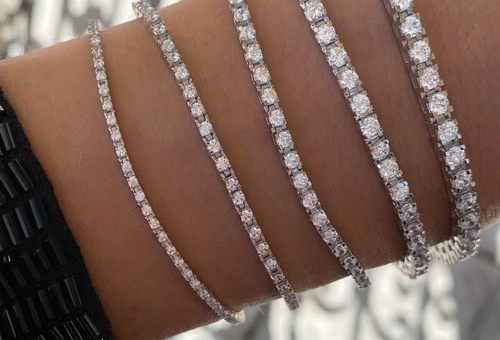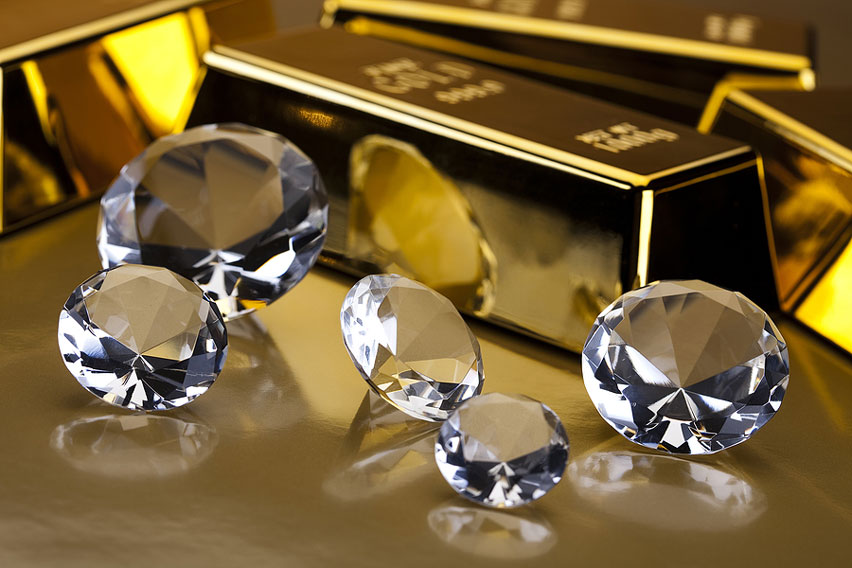Lab diamonds have become a popular choice for those who want the beauty and durability of a diamond without the ethical and environmental concerns of mined stones. However, some consumers seek lab diamond substitutes that offer similar brilliance at a more affordable price. In this article, we will explore the best lab diamond substitutes and how they compare to traditional lab diamonds.
Why Consider Lab Diamond Substitutes?
Lab diamonds are created using advanced technology to mimic the properties of natural diamonds. While they offer excellent quality, some people prefer lab diamond substitutes for various reasons, including cost-effectiveness, variety, and ethical considerations. These alternatives provide a range of options for those who want the sparkle of a diamond without the high price tag associated with lab diamonds.
Moissanite: A Brilliant Lab Diamond Substitute
One of the most popular lab diamond substitutes is moissanite. This gemstone is known for its dazzling brilliance and fire, making it an excellent alternative to lab diamonds. Moissanite is nearly as hard as lab diamonds, ranking 9.25 on the Mohs scale, compared to lab diamonds which rank 10. This durability makes it an excellent choice for engagement rings and everyday jewelry. Additionally, moissanite is more affordable than lab diamonds, making it a budget-friendly option for those seeking a stunning gem without compromising on quality.
White Sapphire: A Natural Alternative to Lab Diamonds
White sapphire is another lab diamond substitute that offers a beautiful, natural appearance. Although it does not have the same brilliance as lab diamonds, it is still a durable and attractive choice. White sapphire ranks 9 on the Mohs scale, making it a strong contender among lab diamond substitutes. Unlike lab diamonds, white sapphire tends to have a slightly cloudy appearance, but this can be reduced with proper cutting and polishing. Many consumers choose white sapphire as an alternative to lab diamonds due to its affordability and availability.
Cubic Zirconia: An Affordable Substitute for Lab Diamonds
Cubic zirconia (CZ) is one of the most well-known lab diamond substitutes. This synthetic gemstone is widely used as an alternative to lab diamonds due to its affordability and availability. While cubic zirconia does not have the same hardness as lab diamonds, ranking around 8 on the Mohs scale, it still provides a visually similar appearance. However, cubic zirconia is more prone to scratching and clouding over time, making it less durable than lab diamonds. Despite this, cubic zirconia remains a popular choice for those looking for a temporary or budget-friendly alternative to lab diamonds.
Zircon: A Natural Gemstone That Resembles Lab Diamonds
Zircon is a lesser-known but highly effective lab diamond substitute. This natural gemstone offers remarkable brilliance and fire, making it an excellent alternative to lab diamonds. Zircon comes in a variety of colors, but the colorless variety is most commonly used as a substitute for lab diamonds. While zircon is not as hard as lab diamonds, ranking between 6 and 7.5 on the Mohs scale, it is still a durable choice for jewelry. Many jewelers recommend zircon as an alternative to lab diamonds due to its natural origin and affordability.
Synthetic Spinel: A Versatile Lab Diamond Substitute
Synthetic spinel is another great option for those looking for lab diamond substitutes. This man-made gemstone is designed to mimic the appearance of lab diamonds while offering durability and affordability. Synthetic spinel is commonly used in fashion jewelry and engagement rings as an alternative to lab diamonds. While it does not have the same level of brilliance as lab diamonds, it still provides a stunning and elegant look. Consumers who prefer lab diamond substitutes often choose synthetic spinel for its cost-effectiveness and availability in various shapes and sizes.
How to Choose the Best Lab Diamond Substitute
When selecting lab diamond substitutes, it is essential to consider factors such as hardness, brilliance, and price. Lab diamonds are known for their durability and brilliance, but lab diamond substitutes can offer similar qualities at a lower cost. Moissanite and white sapphire are excellent choices for those who prioritize durability, while cubic zirconia and zircon provide affordable alternatives. Understanding the differences between these options will help consumers make an informed decision when choosing the best lab diamond substitute for their needs.
Conclusion: Finding the Perfect Lab Diamond Alternative
Lab diamonds have revolutionized the jewelry industry, but lab diamond substitutes provide additional options for those looking for affordability and variety. Moissanite, white sapphire, cubic zirconia, zircon, and synthetic spinel all serve as excellent alternatives to lab diamonds, each with its unique benefits. Whether you are looking for a budget-friendly option or a natural gemstone, there are numerous lab diamond substitutes available to suit your style and preferences. By exploring these alternatives, you can find the perfect gemstone that aligns with your budget and ethical values while maintaining the brilliance and elegance of traditional lab diamonds.










